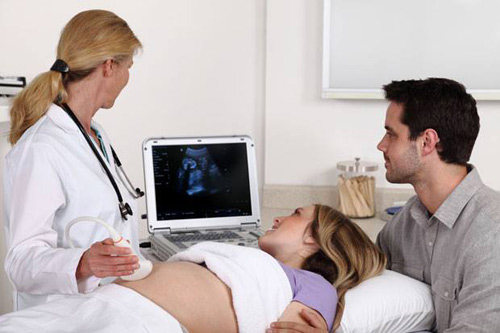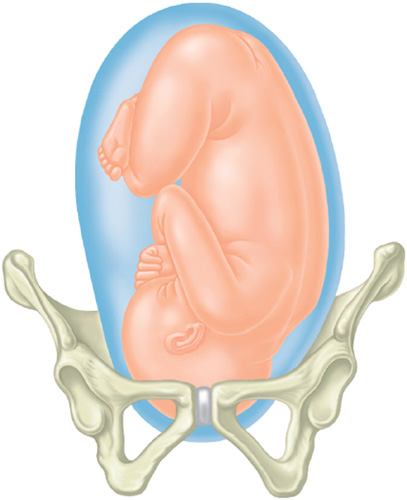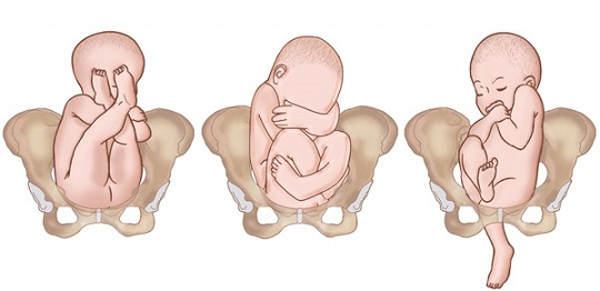How to predict the position of the fetus in the womb
Towards the end of pregnancy, interest in the fetal position in the womb will increase. Different lying positions will create advantages or disadvantages for the mother's birth. So how to predict the position of the fetus in the womb how accurate?
- Based on the experience shared by many mothers, it is possible to rely on the shape of the pregnant belly and fetal movements to somewhat predict the position of the fetus in the womb.
- The mother's navel protrudes out, the abdomen is enlarged and the fetus often kicks the mother's ribs: These signs can signal that the fetus is facing outward, in positions such as forehead , face ...
- The mother's abdomen is slightly flat, feel the baby often kicking the abdomen first: The baby may be in the position with his back to the mother's back and facing out.
- I feel the upper belly rise on one side and when I press it lightly, the whole body moves: Most likely the baby is on the head and you have pressed on the bottom of the baby.
- Mother often feels the kicks near the navel: Usually, the position of the fetus in the womb is in the most favorable position and the baby is looking forward to seeing you.
- In addition, pregnant mothers can know the exact position of the baby in the womb through the mother's ultrasound results.


When you notice that the position of the fetus in the womb is not favorable, do not worry. Doctors will help mothers check the health of mother and baby, and give appropriate advice. Most births end to perfection no matter what method you give birth, so you should focus on enjoying the last days of your pregnancy and preparing for the arrival of your baby instead of worrying. .
The most common 4 fetal positions in the womb
Towards the end of pregnancy, the fetus will move down into the mother's pelvis to get ready for birth. The fetal position in the womb is monitored especially in the last weeks. In many cases, the fetus is in unfavorable positions such as the breech or breech position until the 40th week, the last week of pregnancy. Below are the most common fetal lying positions in the last weeks of pregnancy that you can know through fetal ultrasound.
The first position of the fetus is favorable for a normal birth

- The position of the fetus in the womb often has a significant influence on the birth. If the fetus is in a favorable position, mothers can give birth naturally and without spending too much time and energy. On the contrary, if the fetus is in an unfavorable position, it will be difficult for the baby to come out through the vagina. Mothers can give birth naturally but easily lose strength due to prolonged labor, or many mothers are assigned to have a cesarean section when the position of the fetus causes difficulties for the birth of the baby. So, what is the ideal position of the fetus in the womb?
- According to experts, in order for the mother to have a favorable normal birth, the fetus is located in the position of the head facing down, the face turned to the side and towards the mother's back, the baby's back is turned towards the mother's belly. This position is called the head position, a convenient position for the baby to get his head out of the mother's birth canal and the midwives easily rotate the baby's shoulders to help the baby's whole body quickly come out of the mother's womb. . When the baby's head is in the most bowed position, doctors call it the crown and this is the most common case in normal births.
Fetal positions such as: head down but facing out, fetus is horizontal with shoulders down into the pelvis, head turned up and buttocks in contact with mother's pelvis (breast position), head turned up and The legs in the mother's pelvis are all unfavorable positions for vaginal births.

The fetus is in the anterior fontanel position – the forehead position

- Although the baby's head is turned down, the baby's face is facing out, the back is too much or the forehead is facing out, making it difficult for the baby to come out through the vagina.
- With the position of the fetus in the womb like that, pregnant mothers are often advised to exercise and walk regularly during the sprint period of pregnancy in the hope that it will help the baby adjust to a favorable position.
- In addition, a procedure known as fetal rotation is also used, but is often not very effective.
The breech fetus is very difficult to give birth naturally

- The breech babies keep their head turned up in the last weeks of pregnancy.
- The baby's bottom falls down to the bottom of the uterus, in the middle of the pelvis. The baby's legs may be raised or crossed right near the "door" of the uterus. Because the area of the buttocks is quite large, the breech pregnancy often makes the mother having a vaginal birth very difficult.
- If the mother's health is not good, the doctor will recommend a cesarean section from the beginning to ensure safety.
Transverse fetus is usually indicated for cesarean section

- Babies lie horizontally in the uterus with their backs down, arms and legs facing up. Your baby's shoulders can fall into the middle of the pelvis.
- The procedure for turning the fetus is usually not effective in this position of the fetus in the womb and the mother is often encouraged to have a cesarean section.



